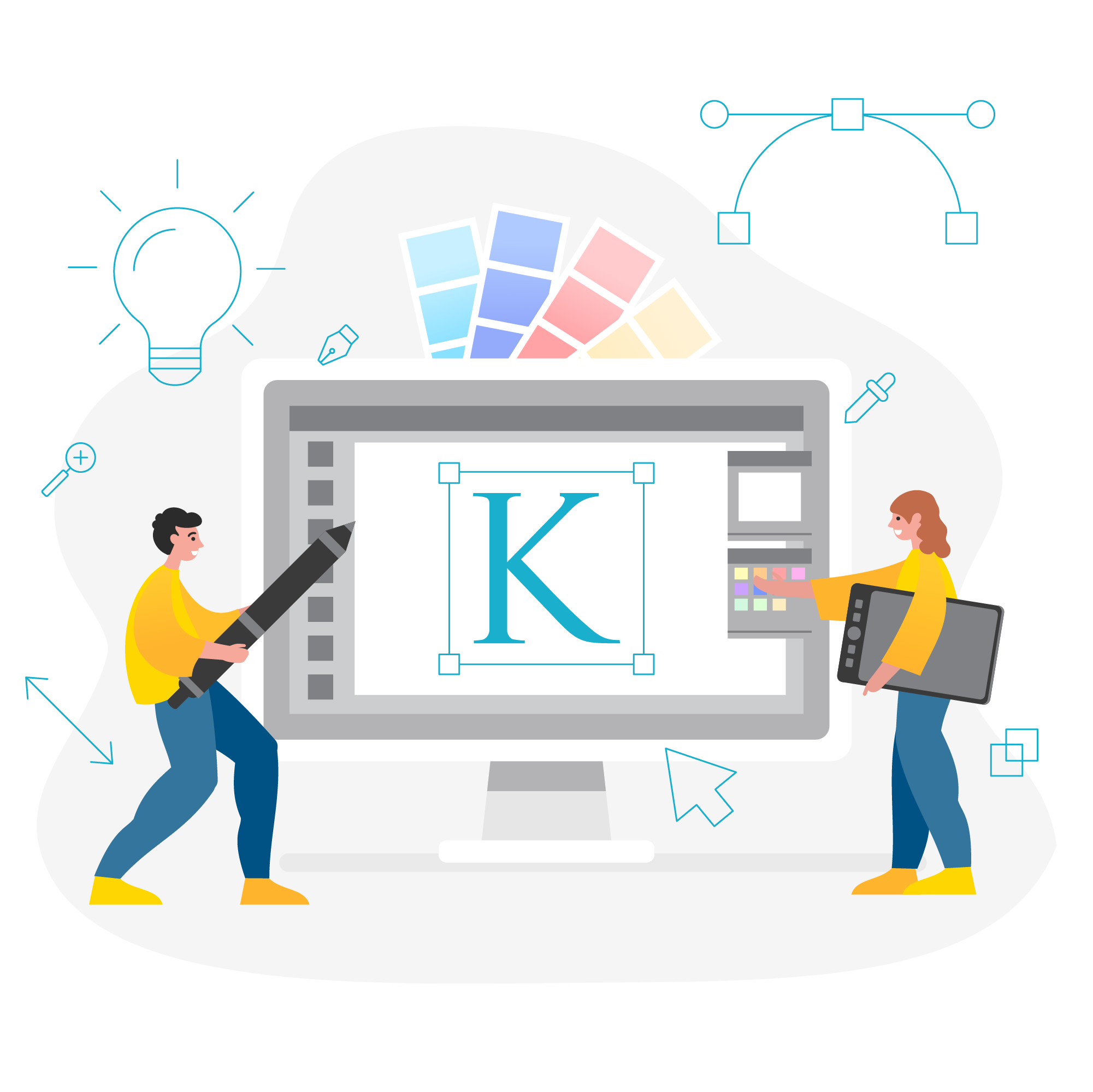It’s just a logo, right? Consider the ubiquity of the Amazon arrow, McDonalds’ golden arches, or Apple’s, well, apple. While the road to global brand recognition can be a long and arduous process, sometimes a logo just sticks in the public consciousness. And for good reason.
Successful logos run the design gamut from purely typographic (e.g. Google, Coca-Cola), to icon-only (e.g. Apple, Twitter), to something in-between with close integration of icon and text (FedEx, Amazon), or combined lockups where either element can stand alone (YouTube, AirBnB, Under Armour). Though the vast majority of brand marks in the world will never reach the recognizability of the Nike swoosh, successful logos are both memorable and recognizable. We like to say that a good logo is the cornerstone of your brand.
Here’s how we design a logo at Keybridge Web.
First, we start with a conversation about your brand as it stands now, and your vision for the future. This is very similar to our website kickoff call, and often are one and the same when the rebrand and website redesign are in conjunction. We’ll establish basic parameters for the logo by asking some aesthetic and conceptual questions. Do you prefer traditional serif fonts, or more modern sans? What object do you think best encapsulates what you do? Is there any imagery we should avoid? Do you lean toward a particular color family? (Everyone loves blue.)
Next, we take everything we’ve gleaned and start our internal concepting. This involves a super-complicated system of research, word listing, pinboarding and sketching, sketching, sketching. Okay, it’s really not that complicated, but this phase is where the magic happens. At this point, we’re generating as many great logo ideas as possible, then narrowing them down to the best.
After the first round of concepting, we clean up roughly a half-dozen potential logos for you to review. The early drafts are presented in black-and-white, to focus our attention on shape and typography. In most cases, you’ll want the logo to look just as attractive without color as it does with, especially in instances when color production is simply not possible. This also ensures we’ll be able to create a “reverse” version of the logo – white for use on a dark or colored background.
Usually there will be two or three clear favorites from the bunch, and from there, we fine-tune the mark. Sometimes there’s a strong preference for one icon, with the font from another option, so we mix and match and adjust and tweak until the perfect lockup is achieved.
Colors are incorporated as the design is finalized. Again, we test a number of palettes and combinations and present you with a handful of preliminary options. Generally, color schemes will utilize one or two primary colors, with at least as many secondary and neutral tones. Nothing is yet set in stone at this point, so if that blue seems like it should be a touch brighter, or you prefer the green from that palette over the purple in this one, or maybe we should incorporate a brown, just say the word.
Finally, the layout and colors are perfect, and we render the approved logo in a number of formats – JPEG, PNG, SVG, and any other file types you may need. We also provide a concise style guide which shows all of your logo’s colorways, the entire color palette (with color codes in RGB, CMYK, HEX and Pantone), and brand fonts.
And there you have it – a shiny new logo, all ready to go on your website, business cards, letterhead, PowerPoint slides, company vehicles, notepads, t-shirts, stickers, phone cases, coffee mugs, ankle tattoos, dog collars, you name it!
